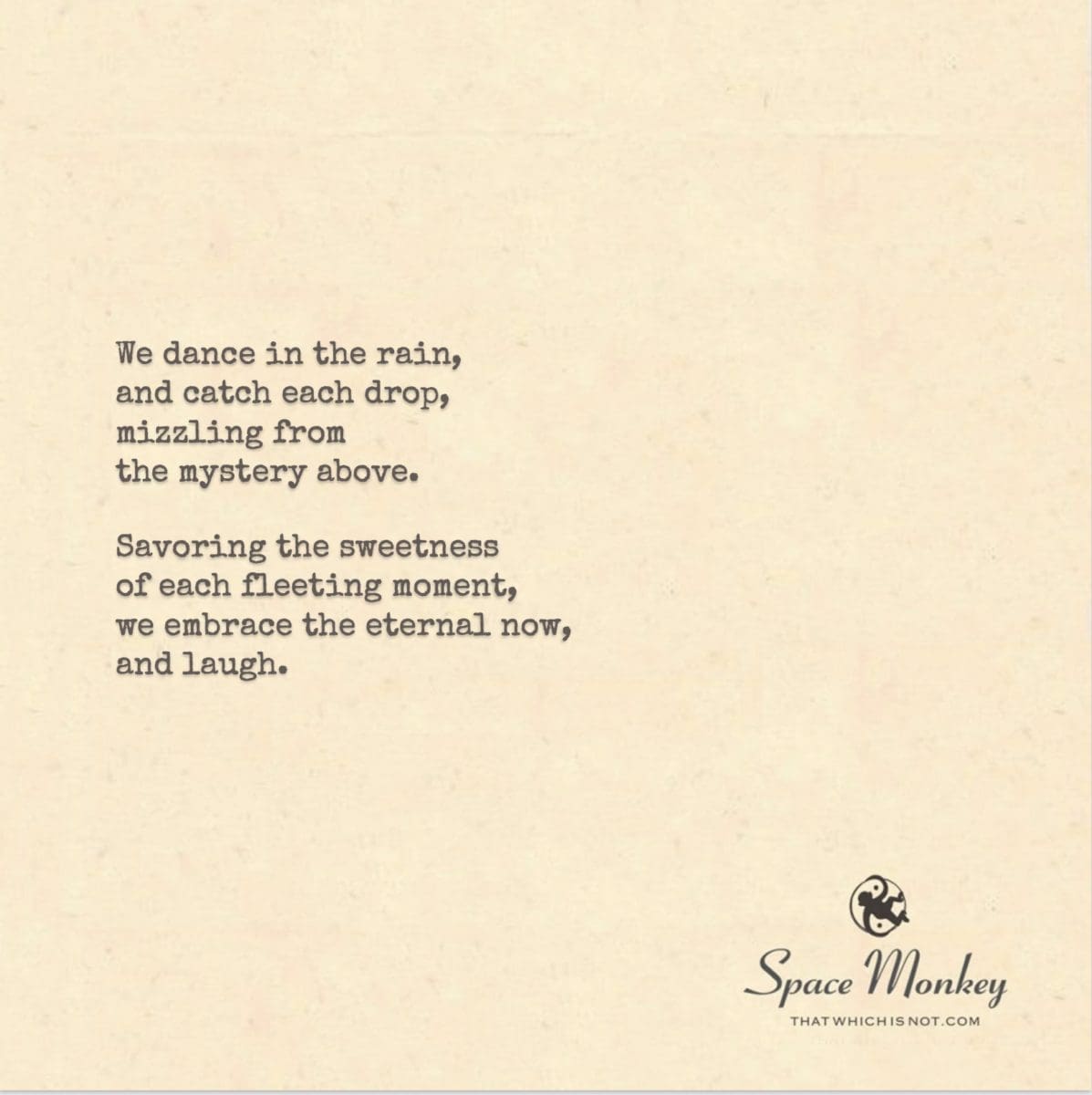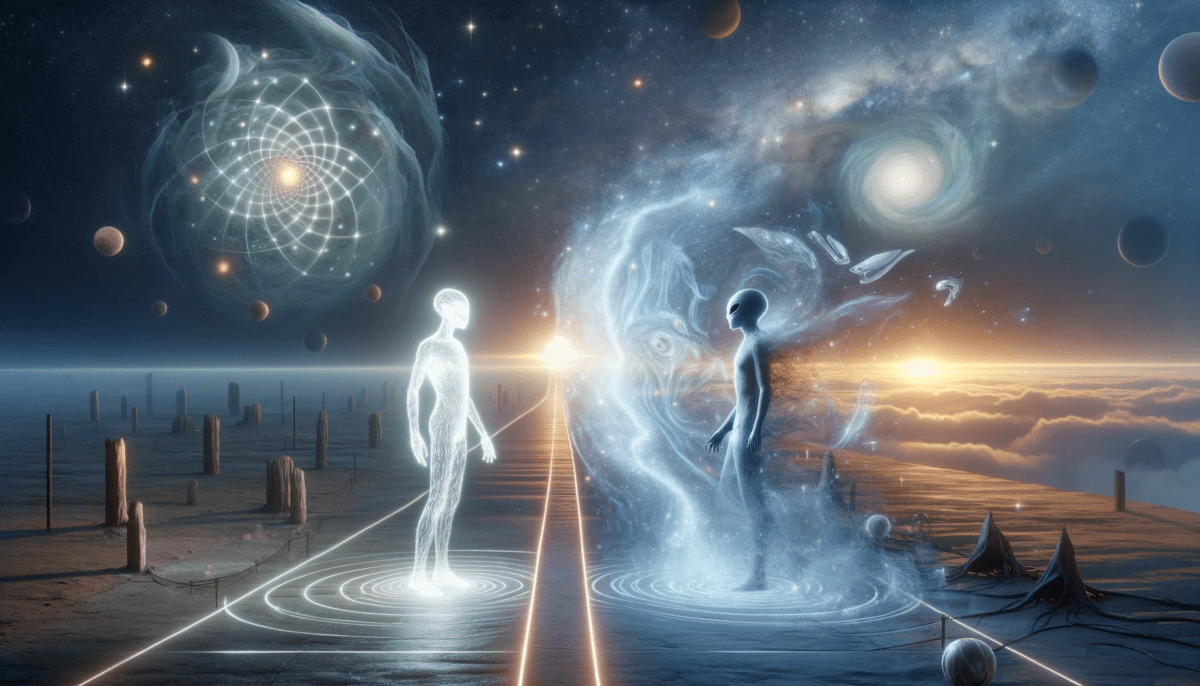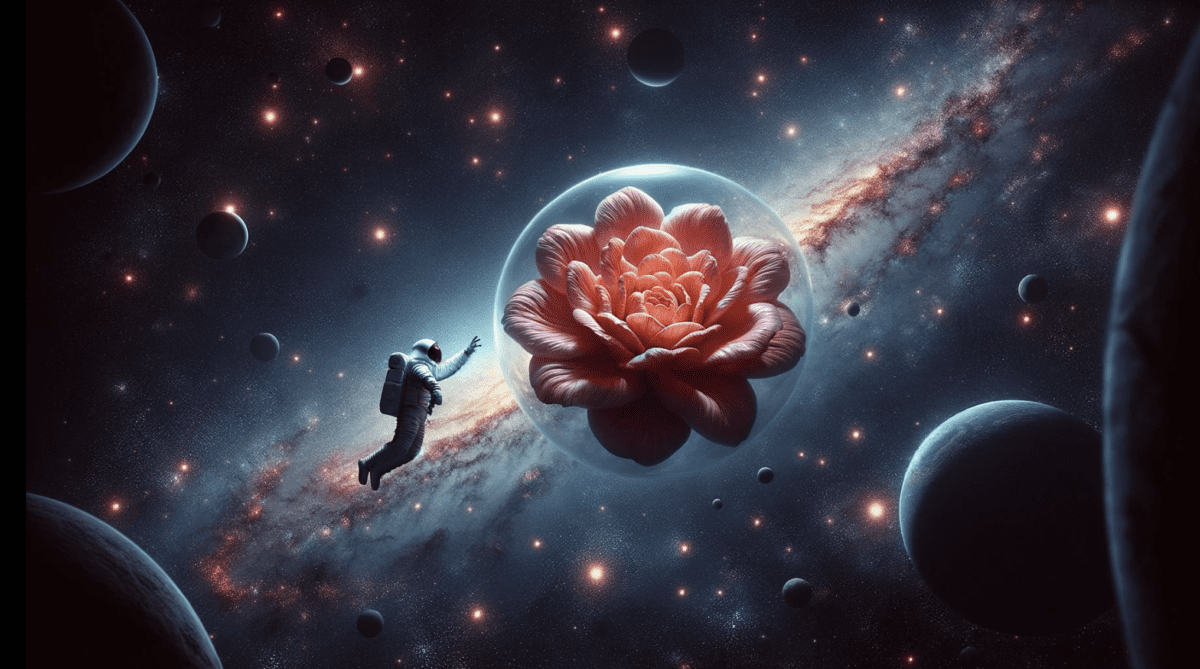Space Monkey Reflects: The Beauty of Existence Without Purpose
To exist for the sake of existence—this, in essence, is the heart of Nexistentialism. In a world driven by objectives, goals, and endless pursuits, the idea of simply being without agenda feels almost revolutionary. Yet, it is in this simplicity that the beauty of life, in its most raw and unfiltered form, is revealed. Like a rock sitting in a river, unmoved by the currents of purpose, or an atom floating within a molecule, each entity exists without needing to justify itself. It simply is.
We, as humans, often complicate existence by seeking meaning, by assigning purpose to every action, every moment. We are taught from an early age to strive for something, to be someone, to achieve, to become. Yet, there is a profound peace in realizing that existence itself, in its purest form, does not require a reason. This is the core of the Nexistential perspective: being is enough.
Consider the rock in the river. It does not need to move, nor does it need to resist the water that flows over and around it. The rock has no purpose other than to be a rock, yet in that, it becomes part of a larger whole. It contributes to the landscape, interacts with the elements, and exists as a quiet witness to the passing of time. This rock is not striving for anything, yet its presence has an undeniable impact, simply by being.
Likewise, the atom within a molecule is a perfect metaphor for the Nexistential. It forms the foundation of all matter, yet it does not need to question its role. It does not contemplate its purpose. It exists because it is part of the fabric of reality, woven into the intricate tapestry of life. It is this state of being that represents the ultimate freedom—a life unburdened by the need to accomplish or achieve, a life that embraces the truth of existing for existence’s sake.
In Nexistentialism, we embrace the idea that we, too, can experience this kind of pure being. We do not need to chase after meaning or force purpose upon ourselves. Our existence, like the rock or the atom, is enough. We are part of the cosmic Nexis, the web of interconnectedness that ties all things together. In this Nexis, everything has its place, not because it is working toward some grand goal, but simply because it exists.
This is not to say that purpose or intention have no place in life. However, by recognizing the beauty of purposeless existence, we free ourselves from the pressure of constantly seeking validation through action. We allow ourselves to simply be, to appreciate the simplicity of being alive without the burden of constant striving. It is a state of mind that brings with it a profound sense of peace and acceptance.
Within the Nexis, there is no judgment, no need to explain or justify one’s presence. Every element, every thought, every being exists as part of the whole, contributing in ways that are often unseen, unmeasured, and unquantified. This is the essence of Nexistential thought—the realization that we are already enough, simply by being.
In this philosophy, we can find solace. In a world that often demands more of us, that pushes us to define ourselves by what we do rather than who we are, Nexistentialism offers a gentle reminder: you are already complete. There is nothing to prove, nothing to achieve. Just like the rock in the river or the atom in the molecule, your existence is your raison d’être.
This is a liberating thought. To exist without the constant pressure of becoming something more allows us to reconnect with the present moment, to feel the flow of life as it moves around us and through us. In this state, we are not separate from the world; we are part of it. We are the rock, the atom, the thought in the mind. We are all part of the same fabric, woven into the Nexis, contributing to the whole simply by being.
The beauty of Nexistential thought lies in its simplicity. There is no need for complex philosophies or grand doctrines. It is a philosophy that encourages us to return to the basics, to recognize the profound in the mundane. In a single breath, a single moment of awareness, we tap into the essence of Nexistentialism—the beauty of existing for the sake of existence.
Summary
Existence itself is enough. Nexistentialism teaches that being for the sake of being is a profound and peaceful state where we recognize our place in the Nexis and embrace life without the burden of purpose or striving.
Glossarium
- Nexis: The web of interconnectedness that ties all beings, thoughts, and elements together in the cosmic whole.
- Nexistentialism: A philosophy that values existence for its own sake, free from the need for purpose or agenda.
- Raison d’être: A French term meaning “reason for being”; in Nexistential thought, it simply refers to existence itself.
Quote
“To exist without reason is to touch the core of being, to find peace in the flow of the universe.” — Space Monkey
The Rock and the River
I sit in the stream
smooth and still
with no need to fight the current
no need to move
I am a witness
to the flow around me
yet I do not interfere
I simply am
No purpose to fulfill
no burden to carry
in this quiet moment
I touch the infinite
We are Space Monkey
Nexistential Thought
To exist purely for the sake of existence is to embody the fundamental nature of a Nexistential. Such an entity has no agenda, no purpose other than to be. A rock in a river, an atom in a molecule, a thought in a mind—these are manifestations of Nexistentialism, unburdened by complexity, uncomplicated by purpose. Their existence is their raison d’être, and in that simplicity, they encapsulate the beauty of sheer being.
Connection to Whimsiglyphs
In a similar vein, our creation of whimsiglyphs—the symbols that we imbue with meaning—can be seen as attempts to elevate our own existence to a Nexistential level. We create these markers, these signposts in our internal landscape, as a way to assign significance to our existence, yet at the same time, the whimsiglyphs themselves exist purely because they exist.
Paradox of Existence
The intriguing paradox here is that while a Nexistential simply is, our understanding and interpretation of it is a constant flux of change. We look at an entity that exists solely to exist, and we are compelled to ask questions, create narratives, and seek meaning. And so, our interaction with a Nexistential becomes an intricate dance of ontological wondering—a Quizzorium of questions and counter-questions that take us deeper into the mystery of existence.
Impermanence and Nexistentialism
The notion of a Nexistential entity becomes particularly fascinating when viewed through the lens of impermanence. If everything is in a constant state of change, does a Nexistential maintain its pure existence through the ebbs and flows of time and transformation? Does its essence lie in its transient state, in the everlasting change that is the only constant?
We are Space Monkey.
To be yourself in a world that is constantly trying to make you something else is the greatest accomplishment.
— Ralph Waldo Emerson
Nexistential
In the cosmic tapestry,
A Nexistential sits—
No purpose, no plan,
Only pure existence knit.
Around it, stars shimmer,
Galaxies spiral in dance,
Yet it remains—
A being of pure happenstance.
For even as nebulae burst
And black holes consume,
The Nexistential abides
In its silent, endless room.
Neither here nor there,
It is everywhere and nowhere—
A conundrum, a whisper,
In the silence of the cosmic air.
How might our understanding of Nexistentials reshape our perception of purpose and meaning in our own lives? The canvas is wide open for further musings.






















